This ’68 Road Runner is Truly a Family Heirloom
 Photography by John Jackson
Photography by John Jacksonhis ’68 Plymouth Road Runner has been in the family since the day it rolled off the lot. Jamey Hyder of Tennessee is the proud heir apparent of the car his father brought home as brand new. He remembers as a kid the fun times throughout the years with his dad and this Road Runner. Yet two early memories are displayed in the build. To answer this question, look to the interior. Over the years Jamey and his dad played many a game of catch; Jamey was also a Star Wars fan. What does all this mean?
The interior features a Star Wars theme, more specifically the Millennium Falcon. (Come on man, every one of us thought the original Star Wars movie was way cool!) If you don’t believe me, pay special attention to the center console and the pattern used in the upholstery. Also, heed the material used. It’s what any of us would have remembered as the color of distressed leather found in a well-worn baseball glove. But more on this later.
The ’68 Plymouth Road Runner is a one-year-only model and as such Jamey wanted to retain many of its original components, albeit “massaged” to keep up with the times. It wasn’t long before Jamey and Charlie Swanson and the crew of Charlies Custom Creations (CCC) of Murfreesboro, Tennessee, joined forces to see what could be done. Jamey has a company that manufactures robotic and automation equipment, so lots of the custom one-off pieces were made at his facilities. The four-year effort between the two has yielded a unique ’68 Plymouth Road Runner.

The original Road Runner featured a 383 with a Carter four-barrel and registered in at 335 hp. The original block is still alive and pumping but now it’s 550 hp. Today it measures out at 496 inches through increased bore and stroke with the machine work handled by CCC. The internal reciprocating parts are all fresh with aluminum Edelbrock heads anchored by ARP studs with custom valve covers. The intake is an Edelbrock Victor holding up a Holley Terminator EFI system. To this a Holley fuel pump and a K&N air filter element resting within a custom air cleaner box are used. An MSD distributor, electronic ignition box, coil, and primary plug wires are also part of the power mix. Exiting the used fuel are 1-3/4-inch primary tube Doug’s headers that empty into 3-inch Cerakoted stainless steel tubing that runs back through a pair of Borla mufflers. The exhaust exits the body, ala NASCAR, just in front of the rear rubber. Other engine accessories include the block-colored aluminum water pump, which is also the same color as the wheels, a SPAL electric fan, a March serpentine belt system, a GM alternator, a Powermaster starter, and an Energizer battery that’s located in the trunk.
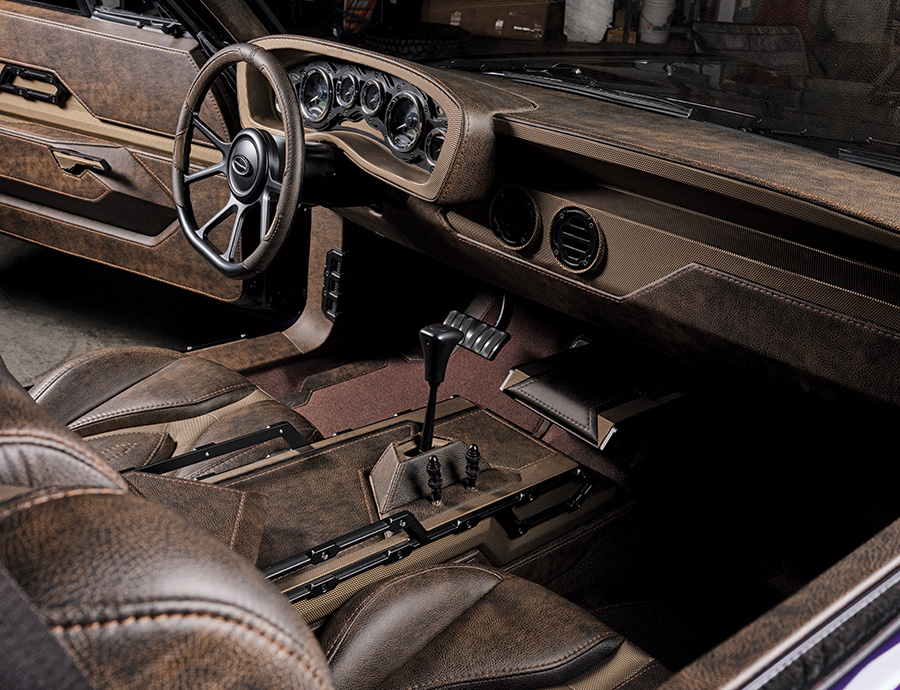
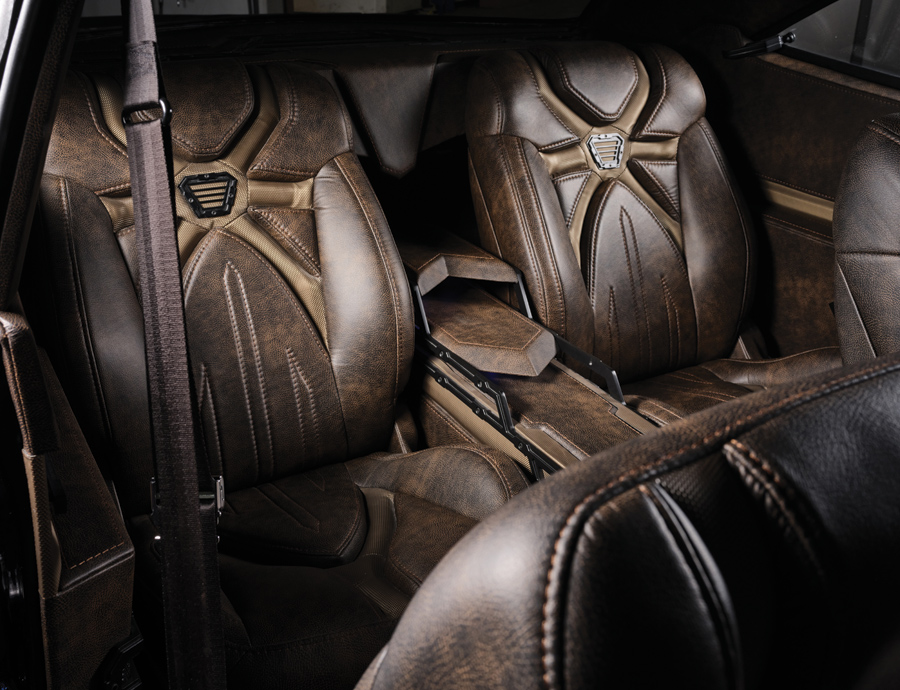

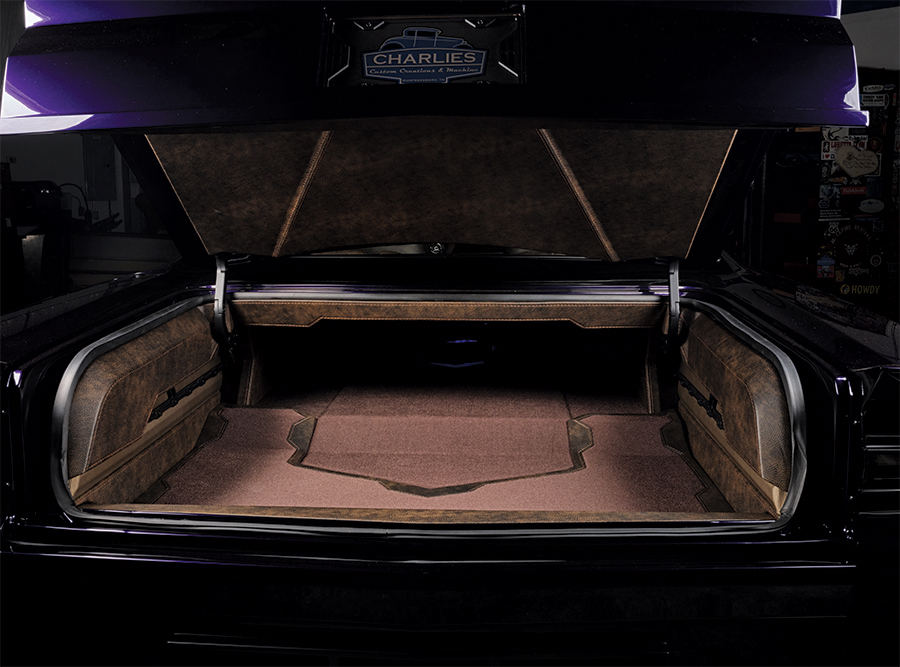
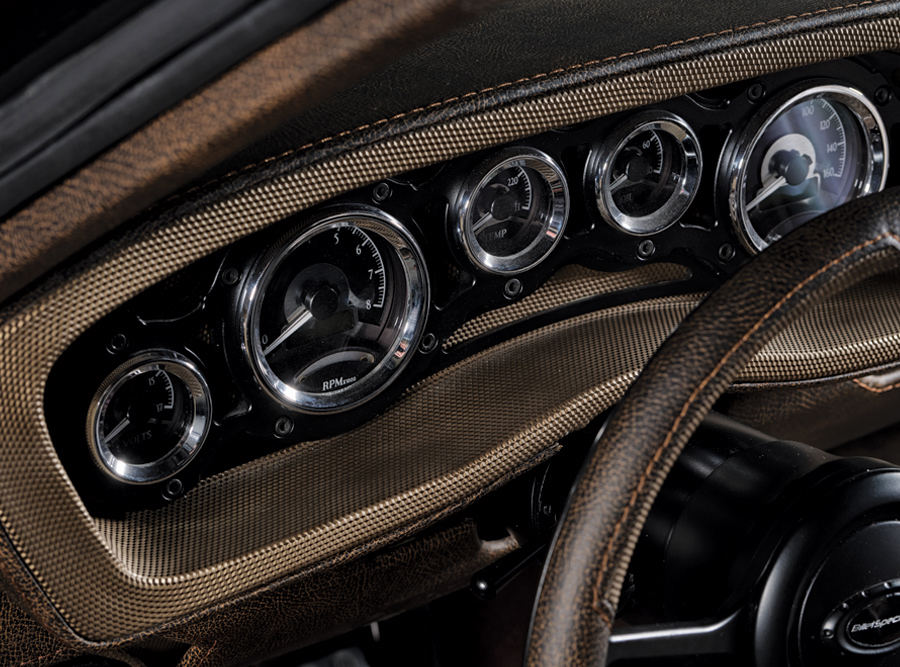
The Hotchkis subframe connectors are positioned by CCC that ties in the front and rear aftermarket suspensions. A QA1 Level 3 IFS along with a Control Freak Suspensions rear setup is used. Factory spindles are found along with a fresh Borgeson steering box that’s linked to an ididit steering column twisted by a custom wheel. In lieu of the original brakes, the latest in today’s stopping power is provided by Wilwood. A set of 13-inch drilled-and-slotted rotors are used in conjunction with six-piston calipers in front and four-piston calipers in back. The master cylinder is a Wilwood with their firewall mounting using Lokar pedals.
The QA1 Level 3 IFS comes with heavy-duty assemblies that offer stiffer springs to maximize cornering and handling. There are front double-adjustable QA1 shocks, a tubular K-member front sway bar, upper and lower control arms, torsion bar adjuster, camber bolt adjuster, and tie rod sleeves.
The rear is based on a Control Freak Suspensions system that is a triangulated four-link with Viking double-adjustable coilover shocks and one set of trailing arms that are angled inward to create the “triangle” setup.
The Road Runner is held up at the corners with a set of matte-finished Ferrada wheels in the same color as the motor with Pirelli P Zero rubber. The wheels measure 20×9 in front and 22×11 in back with 315/30R22 and 255/25R20, respectively.
The body began life as stock ’68 Plymouth Road Runner sheetmetal. CCC took the factory bumpers and reworked them, giving them a more aggressive appearance, and tucked them in tight to the body. You will also see a front splitter and rear diffusor both fabricated at CCC; these components also serve as partial bellypans. There is also a subtle rear wing mounted atop the electrically controlled trunk. The headlights, turn signals, and taillights are stock. The taillights were left alone with the headlights retaining the stock appearance but the grille shell, while having its foundation in the stock appearance, was machined to create a new version of the old. This was the only year that the Plymouth Road Runner used the “dot” side markers. Look closely and you will see these are retained–very cool.
The inner fender panels on a stocker don’t come out but Swanson made inner fender covers that do pop out, allowing access to the suspension. More engine room sheetmetal work includes a custom firewall, all bead rolled at CCC. More of their handiwork includes the frenched rear license plate, a pair of fabricated wheeltubs, a custom fuel filler, and the underside of the hood now mirroring what’s going on inside the engine bay. The hood is now heavier and a special set of hood hinges were made. It also has external aero latches, another nod to a performance car. The bodywork was handled by CCC with Johnny Westwood applying the paint. The color is House of Kolor Voodoo Violet pearl coat over black basecoat with four coats of PPG DCU2021 clear.
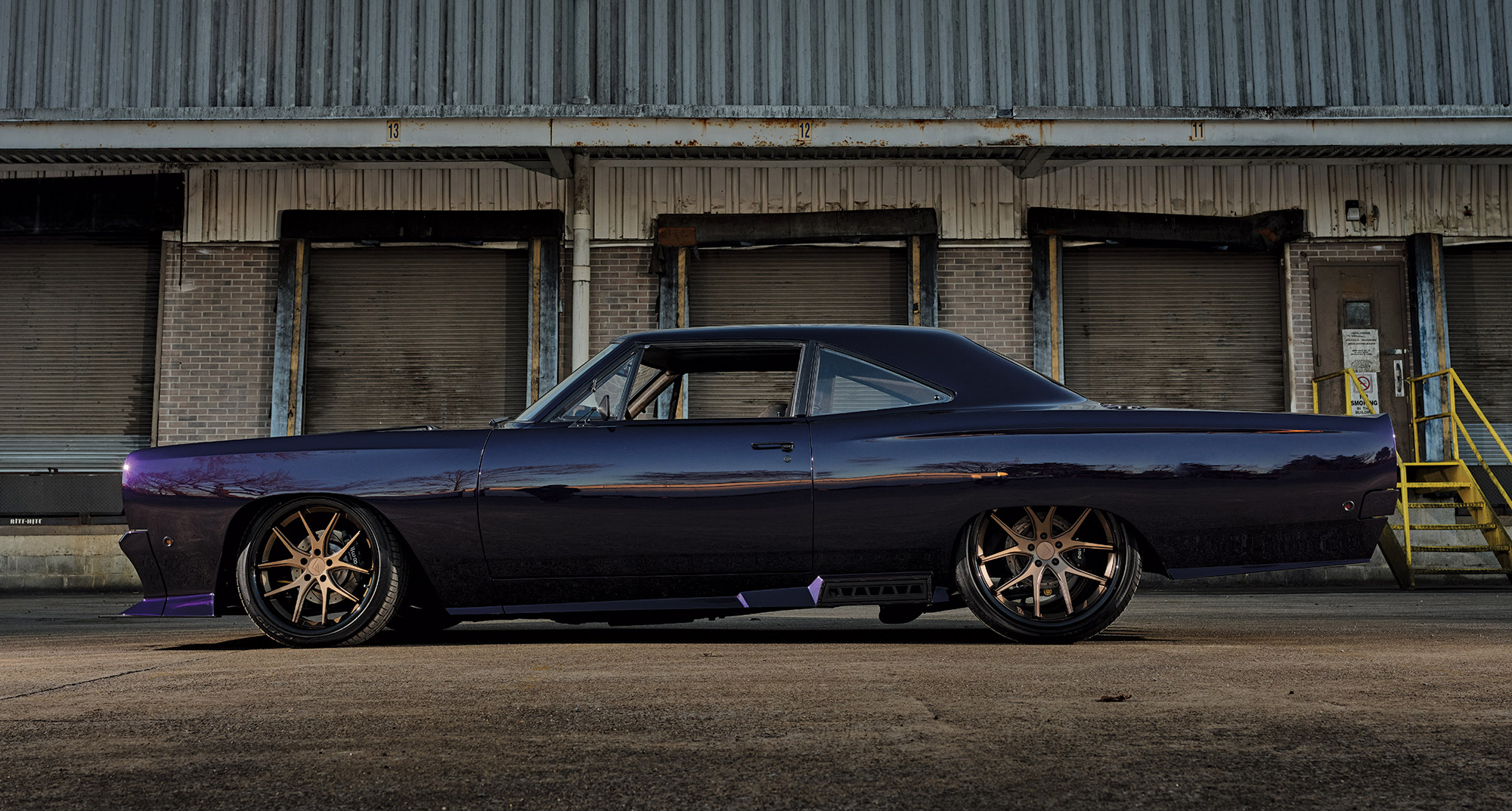
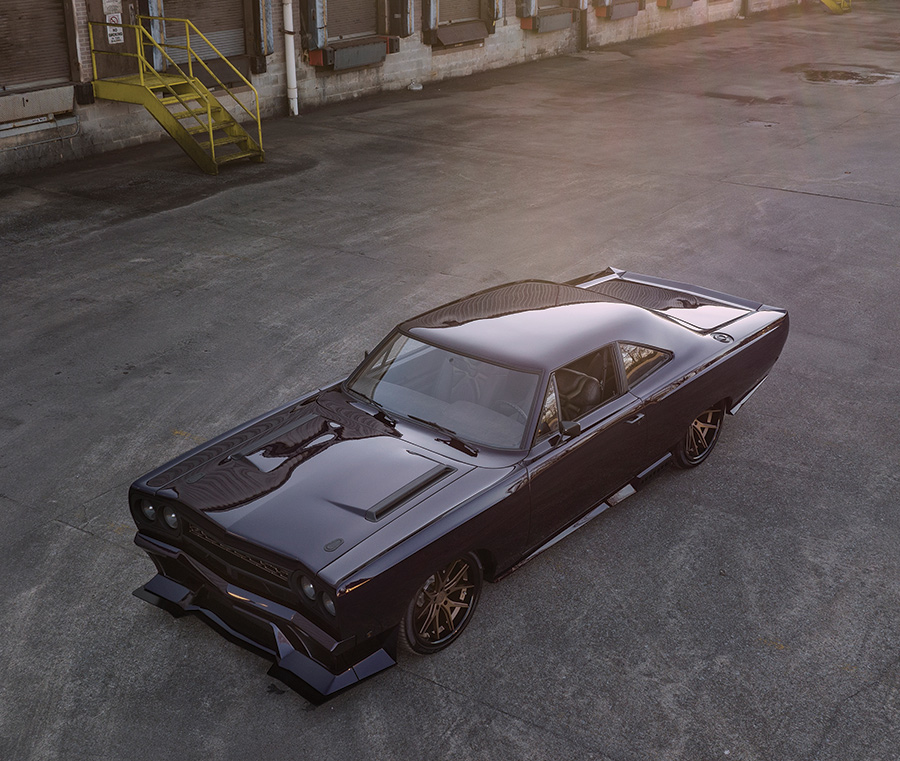

It’s early in the life of this ’68 Plymouth Road Runner and we hope that it will be at all the outdoor events come this summer. You will want to see this ride. Might even see it at Shades of the Past competing for the Triple Crown of Rodding.
